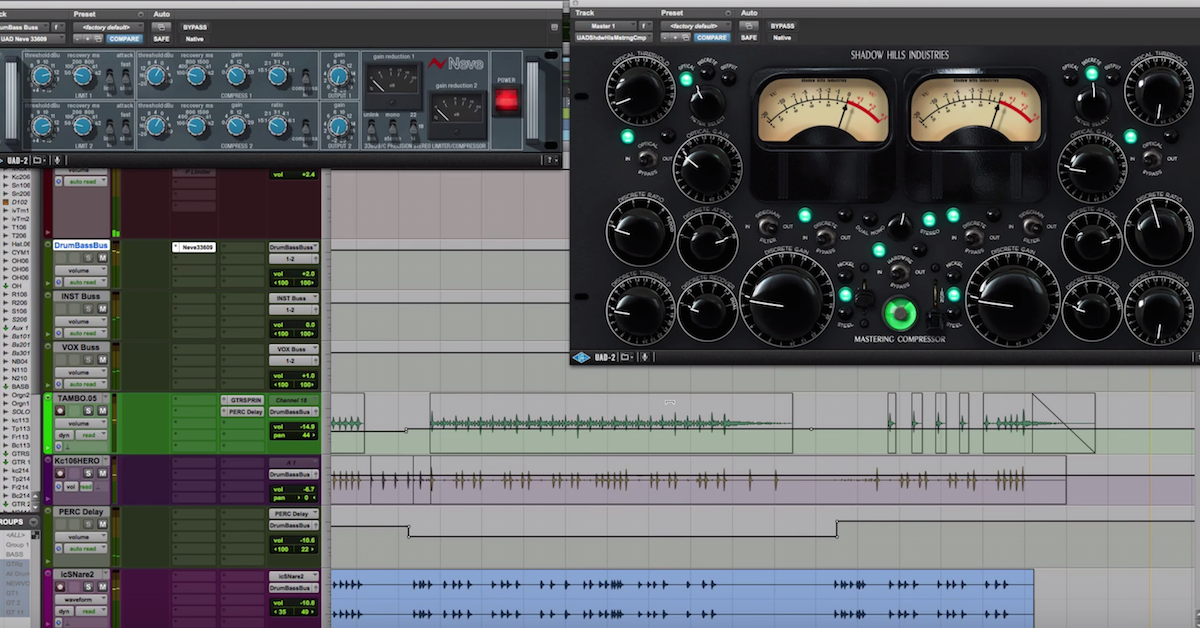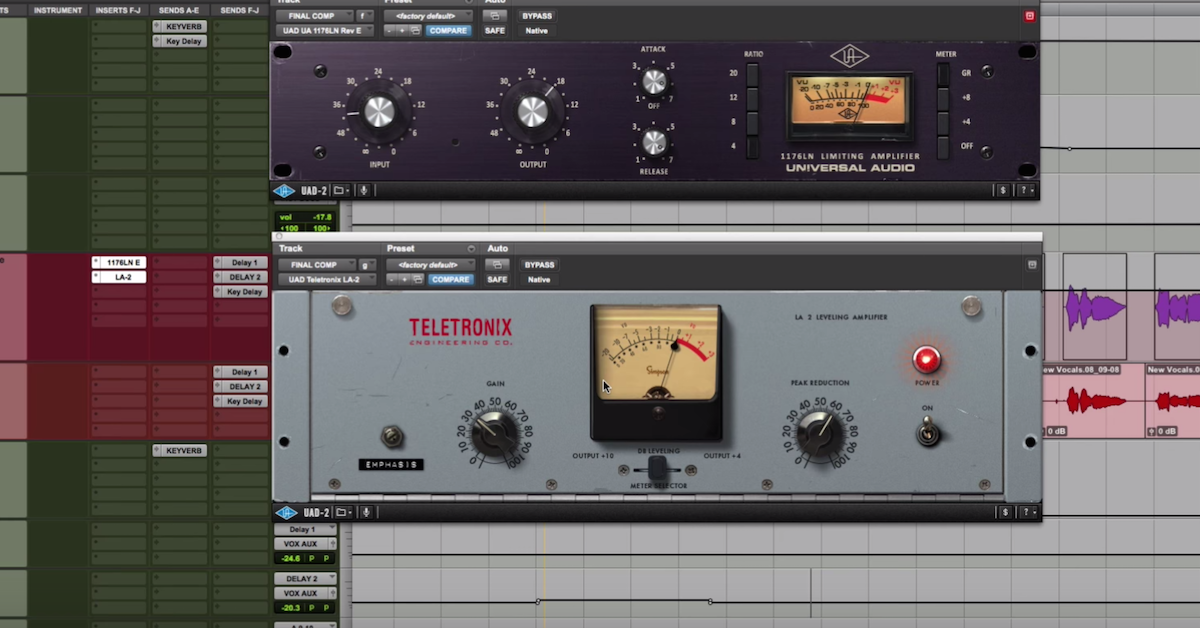How to Use Compression to Increase Perceived Intensity
This is part two in a five part series all about compression.
Today, I’m going to show you how to use compressors to make your performances sound more lively and exciting. Almost as if the instrumentalists were playing with more intensity. It’s a lesser known technique when using compression, but can definitely help enhance your recordings and mixes.
To start, let’s take a listen to this rock and roll track that I recorded and am currently mixing.
[mix]
Okay. So it sounds pretty good, but what I want to do is use compression on the room microphones for these drums to make them sound more lively. Almost like the drummer was playing with more intensity.
Please let me preface that if you recorded in a less than an ideal environment, then you probably don’t want to use this technique to bring out that sound of the room with compressors.
Let’s take a listen to just the room mics on the drums.
[room mics]
Let’s engage the compressors.
[room mics with compression]
One more time, without compression…
[room mics, no compression, then with compression]
Doesn’t it seem like the drummer is playing with more intensity? It’s exactly what I was going for.
So I made sure when I was recording this to pay close attention to the punch of the close mic’d drums. Because I got a good close mic sound, I don’t need to rely on the transients of the room microphones for punch and definition of the drums.
The type of compression that I’m using here is a pretty fast attack and fast release. The way I like to visualize this type of compression is that this is the initial hit. This is the transient of the waveform. By doing this type of compression, I squash this down and bring up in amplitude the tail, which is the resonance of the drum in the room. So therefore, it makes the drummer seem like he’s playing with more intensity.
So let’s take this even further. Let’s take a listen to this additional room mic that I recorded when recording drums.
[second room mics]
So this microphone was set even further away from the drums, so it’s really picking up the sound of the room. Okay? What I’m going for here is a pretty saturated, messy sound.
Let’s engage this plug-in — the Fatso Senior, which is going to behave as a compressor, but also has sort of a tape saturation component to it. Let’s take a listen to it.
[room mics with Fatso Senior]
Hear how when the plug-in is bypassed, it almost sounds really neat and tidy. What I’m going for here is a really messy, raucous sound, and compression, used correctly on the right sources, can definitely do that.
Let’s take a listen to it in context.
[mix]
And without.
[mix, without compression, then with]
Bring it in.
When you’re not worried about making your mixes sound super clean, which I’m not in this case, liberal use of compression can be a lot of fun. Similar to the settings on the 1176, I have a fast attack, which does a good job of catching and crushing the initial transient, a fast release, which adds intensity to the performance, and allows the compressor for the most part to return to its original state before the next drum hit. Then just using the input and output volumes, I just dialed in a sound that I was happy with.
In the end, it ended up being upwards of 15dB of compression, which is quite a lot.
Moving forward, let’s take a listen to the bass. We’ve got two tracks here. We’ve got a direct signal, and a room mic signal. So let’s take a listen to the direct.
[direct bass, then room mic]
Let’s listen to them together.
[direct and room mics]
So we’re going to rely on the direct signal for the plucky sound, which is an important component of a bass sound, and we’re going to rely on the room for exactly that. The sound of a musician in a room. There is no substitute for that.
Using a Fairchild compressor, I’m going to apply a pretty extreme amount of compression, which will actually sort of tighten up the bass and allow it to sit in a space, while making the performance seem a little bit more intense.
[bass, with and without compression]
Also adds a pretty smooth low end to it. Let’s hear them together.
[bass]
Let’s listen without that room sound.
[bass and drums, no room]
The bass is really lacking. So let’s bring in that room sound.
[bass and drums, with room]
Let’s take a listen to the bridge.
[mix]
Really hear the musical qualities of the bass when bringing in the sound of the room.
Alright, so I hope this has been helpful. Keep a lookout for part three in the five part series about compression. If you have any questions, get in touch. Again, this has been Ian Vargo with The Pro Audio Files.
Thanks!






